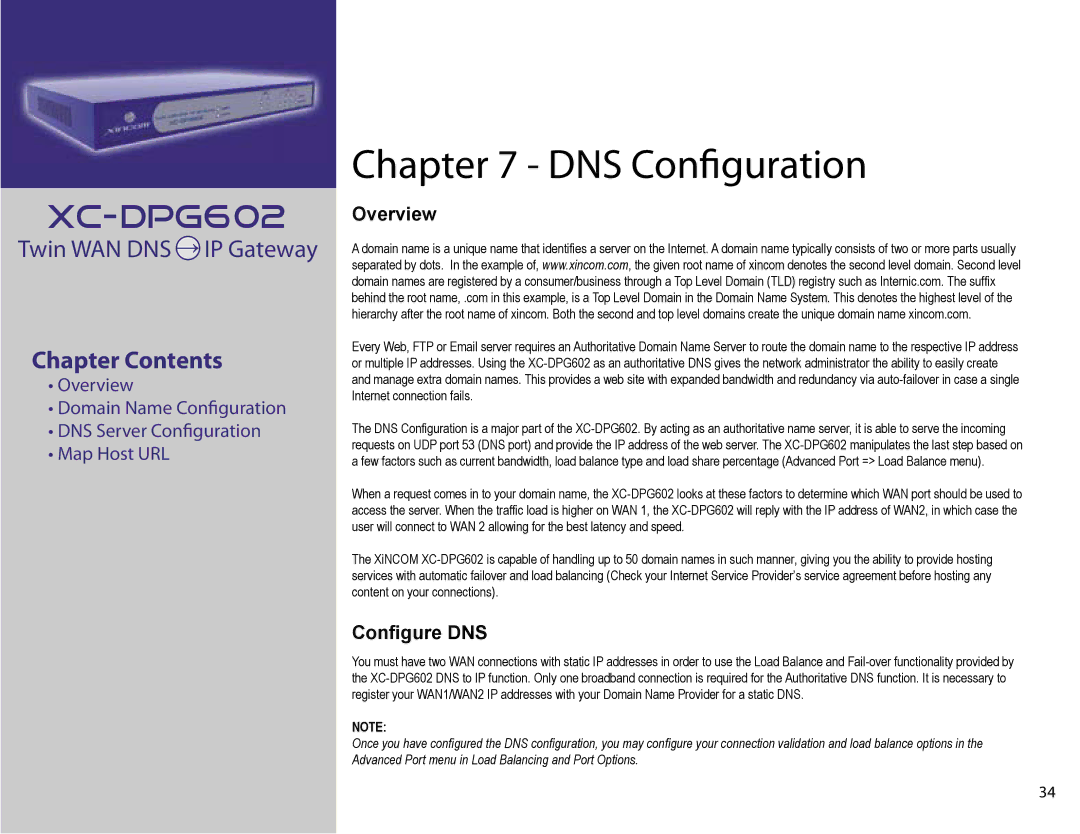
Twin WAN DNS → IP Gateway
Chapter Contents
•Overview
•Domain Name Configuration
•DNS Server Configuration
•Map Host URL
Chapter 7 - DNS Configuration
Overview
A domain name is a unique name that identifies a server on the Internet. A domain name typically consists of two or more parts usually separated by dots. In the example of, www.xincom.com, the given root name of xincom denotes the second level domain. Second level domain names are registered by a consumer/business through a Top Level Domain (TLD) registry such as Internic.com. The suffix behind the root name, .com in this example, is a Top Level Domain in the Domain Name System. This denotes the highest level of the hierarchy after the root name of xincom. Both the second and top level domains create the unique domain name xincom.com.
Every Web, FTP or Email server requires an Authoritative Domain Name Server to route the domain name to the respective IP address or multiple IP addresses. Using the
The DNS Configuration is a major part of the
When a request comes in to your domain name, the
The XiNCOM
Configure DNS
You must have two WAN connections with static IP addresses in order to use the Load Balance and
NOTE:
Once you have configured the DNS configuration, you may configure your connection validation and load balance options in the Advanced Port menu in Load Balancing and Port Options.
34
